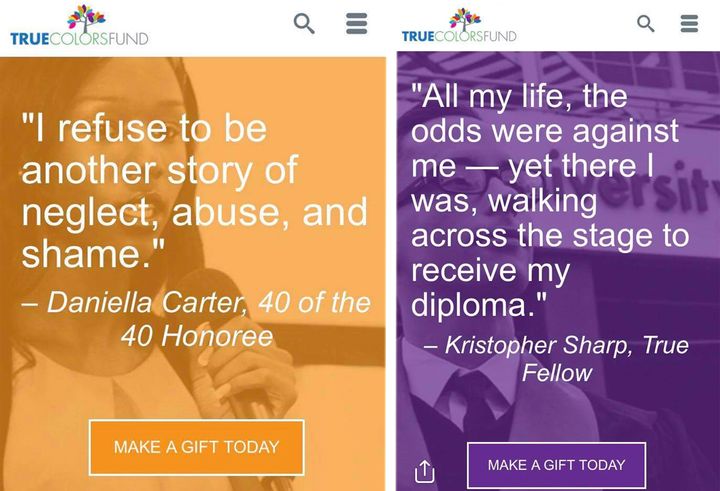
Foster youth bare the brunt of almost every negative social determinant you can imagine. We are underemployed, undereducated, over-incarcerated, and at higher risk for any-and-everything that makes life more difficult. Every piece of empirical evidence available to us paints this picture very clearly. Yet amongst those who work in the space of child welfare, and more broadly youth homelessness, there exists a shocking culture of complacency that at best can be characterized as extreme incompetence, and at worst, potentially life-threatening negligence. I witnessed this first hand over the summer.
In May of 2017, I was due to begin a new job as a career civil servant at the Administration for Children and Families (ACF) within the Department of Health Human Services. It was an opportunity that had come to me after working closely with the True Colors Fund, an organization whose mission is to end LGBTQ youth homelessness.
Sadly, just two days after I began my new job, I was terminated. As a result of the federal hiring freeze President Donald Trump ordered shortly after his inauguration earlier in the year, funding for the position was suddenly cut. Even though I had been given a final offer of employment, moved everything I owned from New York City to Washington, D.C., and was literally working on the job for two whole days -- the agency had every right to terminate me. All federal employees begin their careers with a 1-2 year probationary period. There was nothing I could do to fight it.
I emerged in the aftermath saddled with unnecessary relocation expenses, depleted savings, little resources, and the shallow support system typical of a foster care alum. Sadly, I became homeless again almost immediately, and my mental health suffered as a result. One of the first things I did was reach out to the True Colors Fund to ask for help. They had, after all, encouraged me to pursue this opportunity.
I was shocked at how little support I received from them.
Outside of sending me a few job postings I didn’t qualify for, the True Colors Fund did almost nothing to help me. At one point, while I was living in my car, I reached out to them and explained how precarious my living situation had become, and that I had little access to resources outside of what I was able to accumulate through the street economy. They responded by offering to look over my resume. I sent it to them, hoping this would be the tip of a lifeline. I never heard back.

Daniella Carter (left) and Kristopher Sharp (right) pose for a selfie before co-hosting the True Colors Fund annual “State of Out Youth” at the 2014 40toNone Summit in Houston, TX.
I didn't realize the extent of the problem until fellow child welfare advocate Daniella Carter, a trans woman of color who grew up in foster care and experienced homelessness as a young adult, told me she too had reached out to the True Colors Fund to seek help after becoming homeless again. Even though the True Colors Fund often references the very real dangers trans youth face while experiencing homelessness, like myself, Daniella received little support from them. After meeting with staff from the True Colors Fund twice to seek help, she had to set up an emergency GoFundMe account to get back into safe and stable housing -- something she is still struggling to make a reality.
What is most disturbing about mine and Daniella's interactions with the True Colors Fund is that they have used our storied upbringing as children who grew up in foster care, and our lived experiences surviving youth homelessness in almost all aspects of their work from marketing, to fundraising, to advocacy since 2014. Like many organizations in the profession of child welfare, they took from us, commodified our traumas, and willfully used our lived experiences when it was convenient for them. Yet as we struggled to navigate homelessness, new traumas that manifest from experiencing repeated housing instability, and the potential dangers of the street economy, the True Colors Fund seemingly could not be bothered with us.

Screenshots taken from the True Colors Fund website in October of 2017 soliciting donations with images and quotes from Daniella Carter (left) and Kristopher Sharp (right).
In early October, a fellow advocate and foster care alum Rusty Pretz committed suicide after a long battle with depression and mental health. When I heard about Rusty's story, which struck so close to home with what both I and Daniella had been experiencing, I knew that I had to speak up and share mine. It is no secret that system involved youth are at greater risk of developing mental illness and contemplating suicide. One study suggests that young adults who had been in foster care were nearly four times more likely to have attempted suicide than their peers. In my personal struggle over the summer, I had some dark moments in which I too thought deeply about suicide.
I have often wondered if Rusty also tried to seek help before he decided that suicide was his only way out. Did any of the organizations he worked closely with as an advocate step in to help him navigate the challenges he was experiencing with his mental health? Were there people, organizations, or entities who in whole, or in part, turned him away after using his lived experiences and commodifying his traumas as the True Colors Fund did to both Daniella and me? Young people who grow up in foster care almost always leave with little to no systems of support -- family, friends, community, etc. So then where was Rusty even supposed to go to seek help? Even more, where were Daniella and I supposed to go? If not to those who have been most intimately involved in our lives, our stories, and our experiences, then to whom?
The culture of complacency and the commodification of childhood traumas within the child welfare profession needs to be examined. It is without question, wrong for any organization, person, or entity to use the lived experiences of system involved youth to profit and advance in one breath, and in the next, pretend as if the resources do not exist to help us when we are in crisis. Clearly, it is also paramount that we engage in a deeper conversation about how we are addressing the mental health needs of former foster youth.
This story is not about the True Colors Fund or any other entity in particular. Rather, it is about the questionable patterns and practices that have become the norm in the world of child welfare. In using our compelling life traumas and stories to solicit donations, and grow their organizations, but lacking the will or desire to help us when we falter, one can only begin to feel as though some within this delicate space have lost sight of their missions, and the people they set out to help to begin with.
